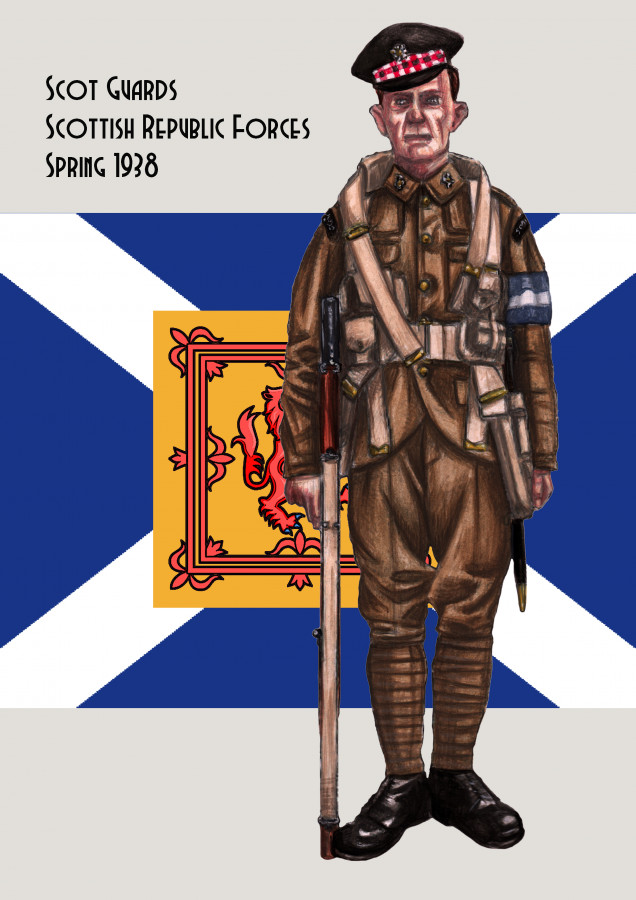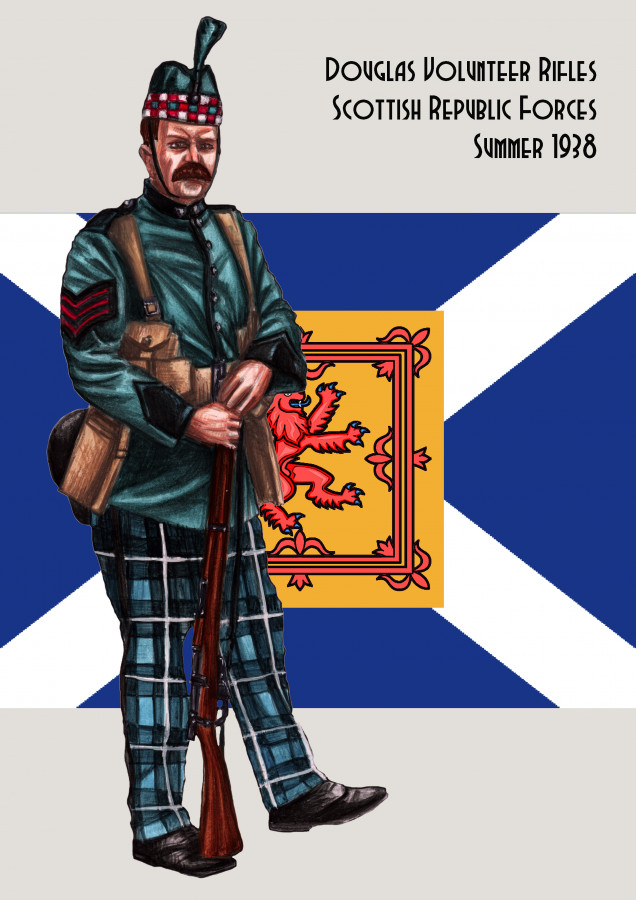
PanzerKaput's Illustrations
The Scottish Republic, Friends and Foes, Part One
Today on my journey through the world of 1938 A Very British Civil War we enter into part one of the Scottish Republic, both its friends and foes.
The Armies and Enemies of the Scottish Republic
After the breaking of the Act of Union, the Coalition Government in Scotland quickly realised that its future rested with a weak England, at least until such time as an English leader rose who would accept a deal with Scotland in return for support. Therefore the policy of armed intervention was agreed as the way forward.
To carry this out the Scottish Government and authorities has considerable military assets available to them, well on paper at least. However, Scotland as in England, had suffered cuts in the military establishment throughout the past decade and as a result many units were below normal operating strength. The core of the army was the Scottish regiments of the old British army, who had been at the heart of the revolution and the disarming of the British Union of Fascists and the Auxiliary constabulary. As with other British units, most regiments had only one under-strength battalion at home and those oversea were beyond Edinburgh’s control. An additional regular asset was the Scot’s Guards, who had been disbanded and dishonoured by King Edward VIII, but returned home to a hero’s welcome. Scotland as elsewhere had to make extensive use of its militias and other voluntary forces. Yet as well as utilising territorial and yeomanry systems, the Scots made use of the older militia traditions and reconstituted rifle volunteers popular in the 19th century. While all these structures succeeded in bringing in small groups of well-motivated volunteers, turning this into a cohesive force was more of a problem.
Fear that the militias, who often had competing and hostile beliefs, might further break down the rule of law lad to the Scottish Republican Government passing the Militia Act. This sought to order the volunteers forces by requiring all armed bodies to be registered and regulated. The chief requirement of this Act was for the militia to be available for thirty days service “at home or abroad” between May and September. The Militia Act was not popular and a constant cause of tension. The most serious confrontation came when a socialist Dockers’ militia, infiltrated by Communist agitators, refused to leave the Clyde. Eventually, the militia was disarmed by Regulars of the Scottish Republic, but only after some skirmishing and several of the ringleaders were arrested.
The supply and maintenance of troops also proved difficult. Although having access to numerous ports, the distribution network was poor and could easily be shut down by striking unions or a feud between rival militias. In general the two best Scottish divisions were stationed in the south-west of south of Edinburgh. The Scottish First Division based at Lockerbie provides and supervised the west and central marches. The Scottish Second Division has deployed from its headquarters in Sterling, forward to protect Edinburgh and to put pressure on the Royalist, English garrison at Berwick on Tweed.












































































Leave a Reply